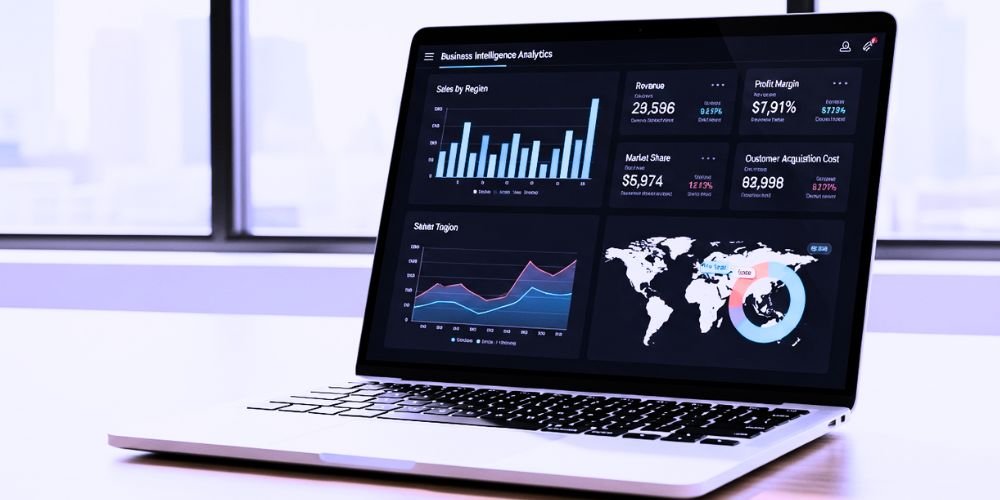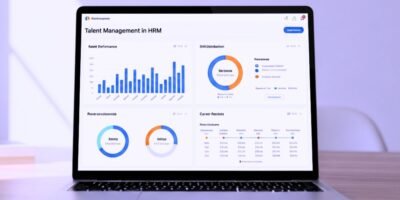In the digital age, businesses are inundated with vast amounts of data from various sources. The ability to convert this data into actionable insights is a game-changer in today’s competitive landscape. Business Intelligence Analytics (BI Analytics) is a robust process that combines data analysis with visualization to help organizations gain valuable insights, identify patterns, and make informed decisions. This article explores the concept of BI Analytics’ importance, key components, and how it empowers businesses to drive growth and success through data-driven strategies.
Understanding BI Analytics
Business Intelligence Analytics is a data-driven approach that collects, analyzes, and visualizes data to generate meaningful insights. The primary goal of BI Analytics is to help decision-makers and stakeholders understand the past, monitor the present, and predict future trends, enabling them to make informed decisions and drive strategic initiatives. It utilizes various techniques, tools, and technologies to process and present data in a user-friendly and visually appealing format.
In the context of BI Analytics, data analysis involves the application of statistical, mathematical, and computational methods to discover patterns, relationships, and trends within the data. This analysis is critical for uncovering valuable insights to guide business strategies and decision-making.
Critical Components of BI Analytics
Regarding BI analytics, there are several critical components to consider. First and foremost, data quality is essential. Any insights derived from BI analytics will be flawed and unreliable without accurate and reliable data.
Data Collection and Integration
The first step in BI Analytics is data collection from diverse sources, such as databases, spreadsheets, cloud applications, and external platforms. This data is then integrated and consolidated into a central repository for analysis. Data collection may involve using Extract, Transform, and Load (ETL) processes to gather data from different sources and merge it into a data warehouse or data mart. The data integration step ensures that data from various systems are harmonized and can be effectively analyzed.
Data Preparation and Cleaning
Before analysis, data must undergo preparation and cleaning to ensure accuracy and consistency. This step involves removing duplicates, handling missing values, and transforming data into a standardized format. Data cleaning is crucial as it provides the analysis based on reliable, high-quality data. Dirty data can lead to erroneous conclusions and misinformed decisions, making data preparation an essential part of the process.
Data Analysis Techniques
Descriptive analytics summarizes historical data and provides insights into past performance. It includes basic statistical measures such as mean, median, and mode and data visualizations like bar charts, line graphs, and pie charts. Diagnostic analytics investigates the reasons behind trends and performance metrics. It aims to understand why certain events occurred and can involve root cause and regression analysis. Predictive analytics uses historical data and statistical algorithms to forecast future outcomes and trends. It can help organizations anticipate demand, identify potential risks, and plan for different scenarios.
Data Visualization
Data visualization is a crucial aspect of BI Analytics, presenting complex data quickly and visually engagingly. Interactive charts, graphs, dashboards, and heatmaps make it easier for stakeholders to interpret and explore the data. Effective data visualization lets decision-makers quickly grasp key insights, spot trends, and identify outliers. Interactive dashboards allow users to drill down into specific data points and adjust parameters for deeper analysis. Data visualization tools play a vital role in communication, as they help present data compellingly and persuasively, facilitating data-driven discussions and consensus-building among stakeholders.
Business Performance Monitoring
BI Analytics continuously monitors key performance indicators (KPIs) to track real-time business performance. This monitoring enables organizations to respond promptly to changing trends and make data-driven adjustments to achieve their objectives. Real-time performance monitoring is vital for industries with dynamic and fast-paced environments. It allows businesses to detect deviations from expected outcomes and take corrective actions promptly.
Importance of BI Analytics
BI analytics is crucial in helping businesses make informed decisions, identify opportunities, and drive growth.
Informed Decision-Making
The primary advantage of BI Analytics is its ability to facilitate data-driven decision-making. Decision-makers can access real-time data insights, identify key performance indicators (KPIs), and evaluate business performance based on objective information. Instead of relying on intuition or past experiences, businesses can base their decisions on accurate and up-to-date data. This data-driven approach reduces the risk of making uninformed choices and enables organizations to respond quickly to market changes and opportunities.
Strategic Planning and Forecasting
BI Analytics aids in strategic planning and forecasting by analyzing historical data and identifying trends. It empowers organizations to anticipate future scenarios and formulate proactive strategies. A retail company can use historical sales data and market trends to forecast product demand, helping them optimize inventory management and plan marketing campaigns more effectively.
Identifying Business Opportunities
By analyzing data from various sources, BI Analytics identifies opportunities for growth, optimization, and innovation. It helps organizations capitalize on emerging trends and gain a competitive edge in the market. A telecommunications company may analyze customer usage patterns and identify an opportunity to introduce new service plans tailored to specific customer segments, leading to increased customer satisfaction and revenue growth.
Performance Optimization
BI Analytics enables businesses to optimize their operations, processes, and resource allocation. By identifying inefficiencies and bottlenecks, organizations can enhance productivity and reduce costs. A manufacturing company can use BI Analytics to identify production bottlenecks and optimize the production process, ultimately increasing output and reducing manufacturing lead times.
Customer Understanding and Personalization
Through BI Analytics, businesses better understand customer behavior, preferences, and needs. This knowledge enables personalized marketing strategies and improved customer experiences. An e-commerce company can analyze customer purchase history and browsing behavior to provide customized product recommendations, enhancing customer satisfaction and driving repeat business.
Conclusion
Business Intelligence Analytics (BI Analytics) has become an indispensable tool for organizations seeking to leverage data for strategic decision-making and business success. Collecting, integrating, and analyzing data empowers decision-makers to gain valuable insights, identify trends, and respond proactively to market dynamics. Visualizing data in interactive formats makes complex information accessible and understandable to stakeholders at all levels.
BI Analytics is crucial in strategic planning, forecasting, and optimizing performance, enabling organizations to gain a competitive advantage and achieve their goals. Embracing BI Analytics as an integral part of the business strategy unlocks the power of data and guides organizations toward growth, innovation, and sustained success in the dynamic business landscape. With BI Analytics as a driving force, businesses can confidently navigate the complexities of the modern data-driven world and achieve excellence in their decision-making processes.













